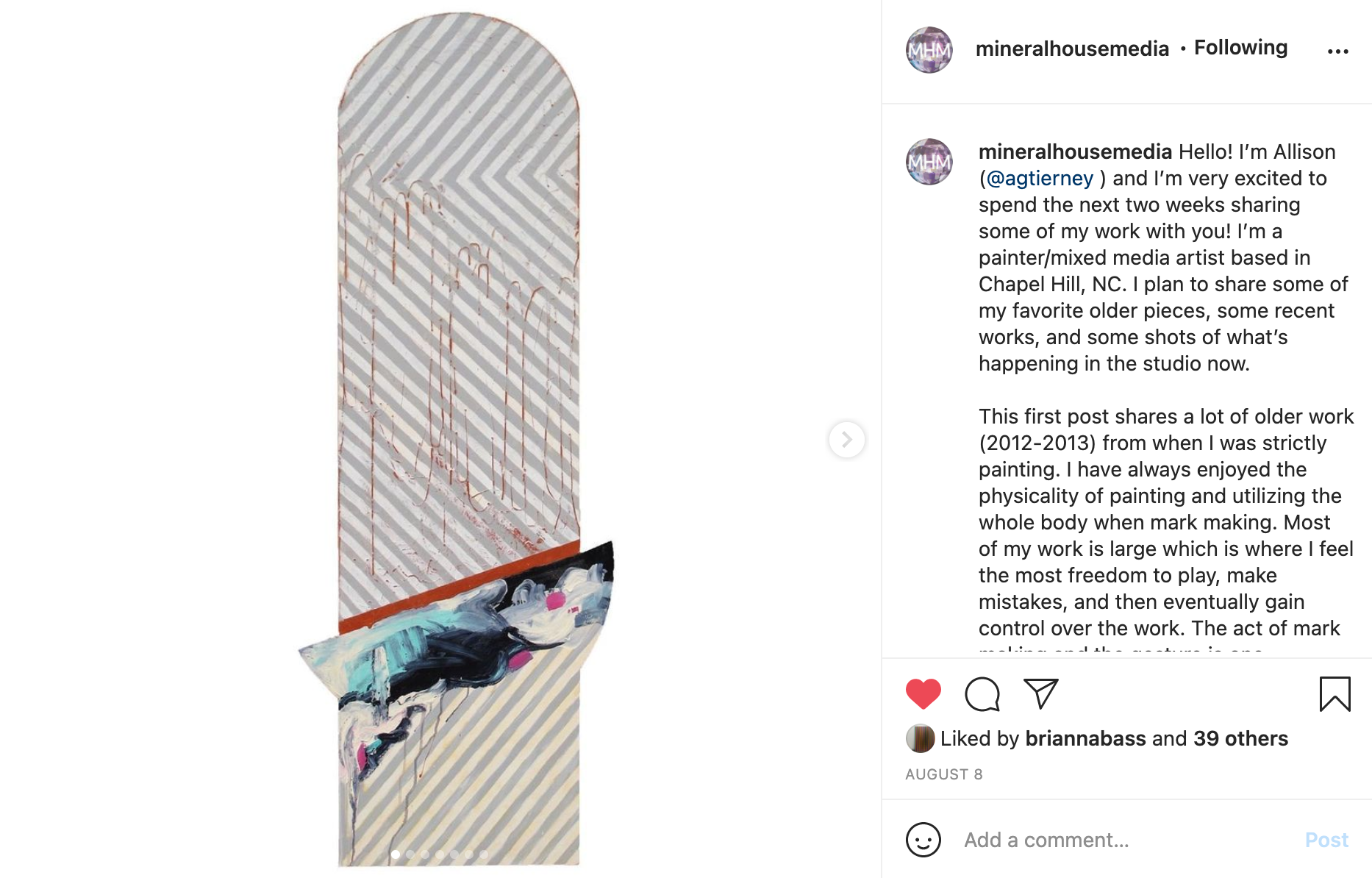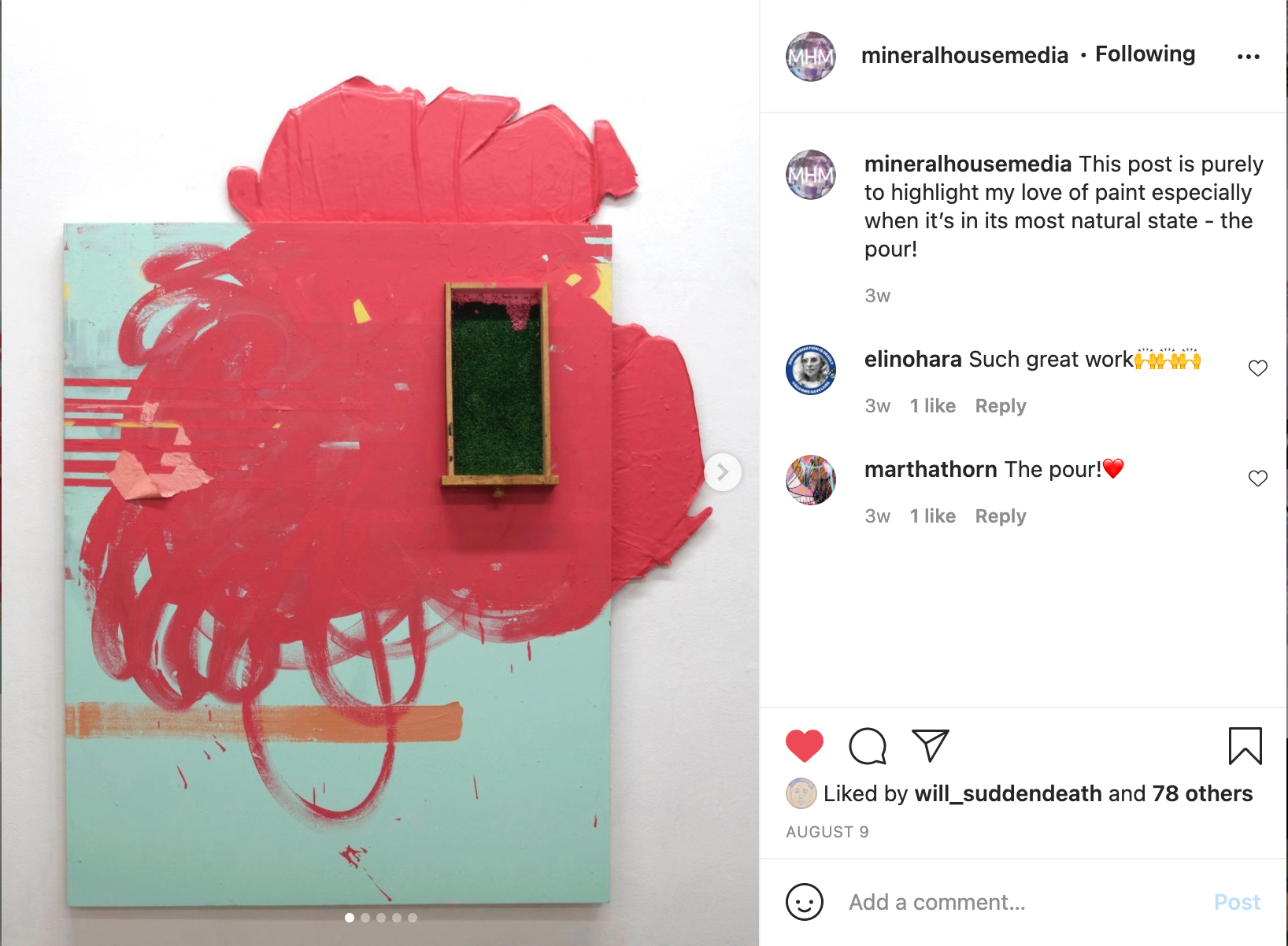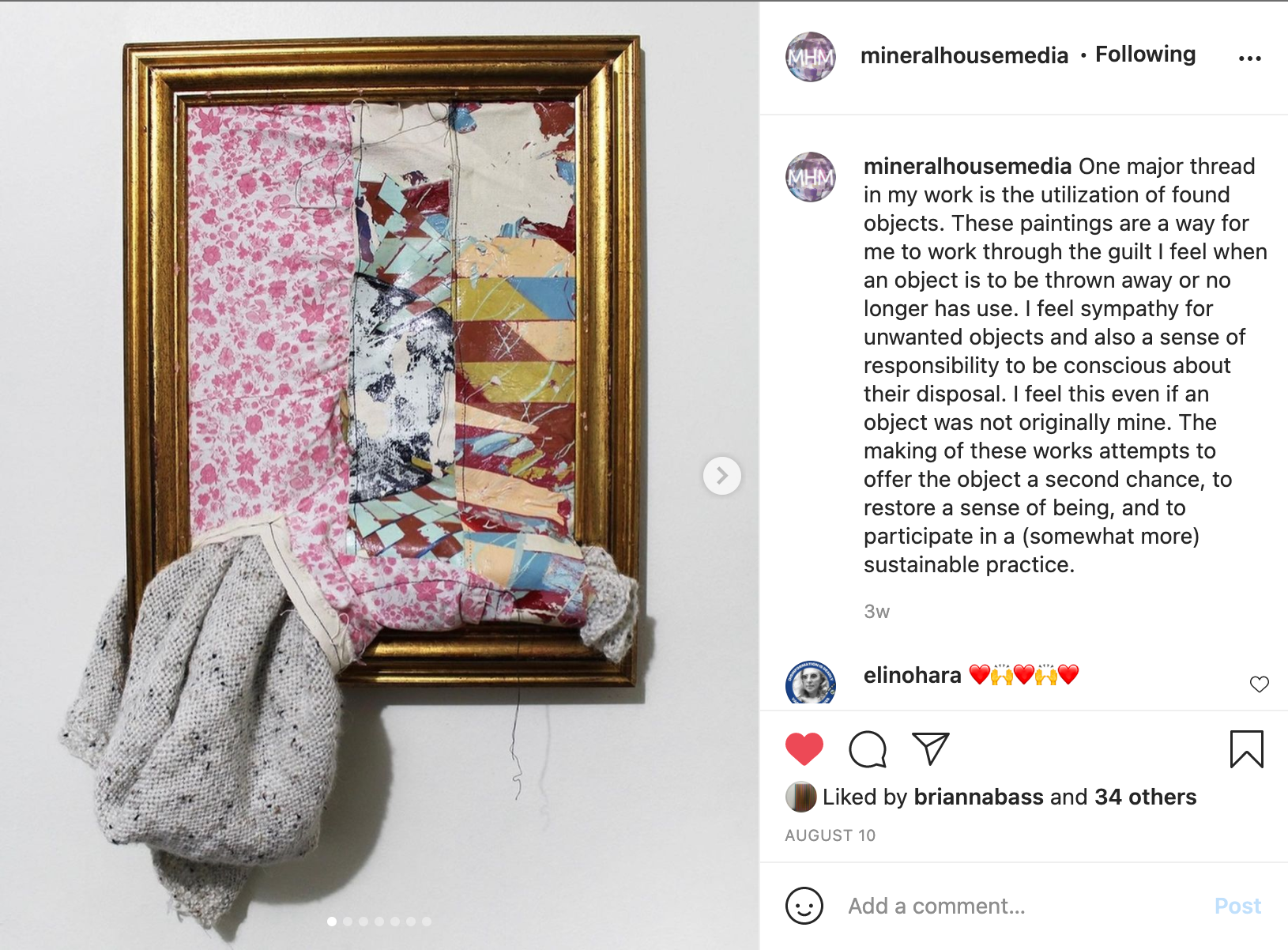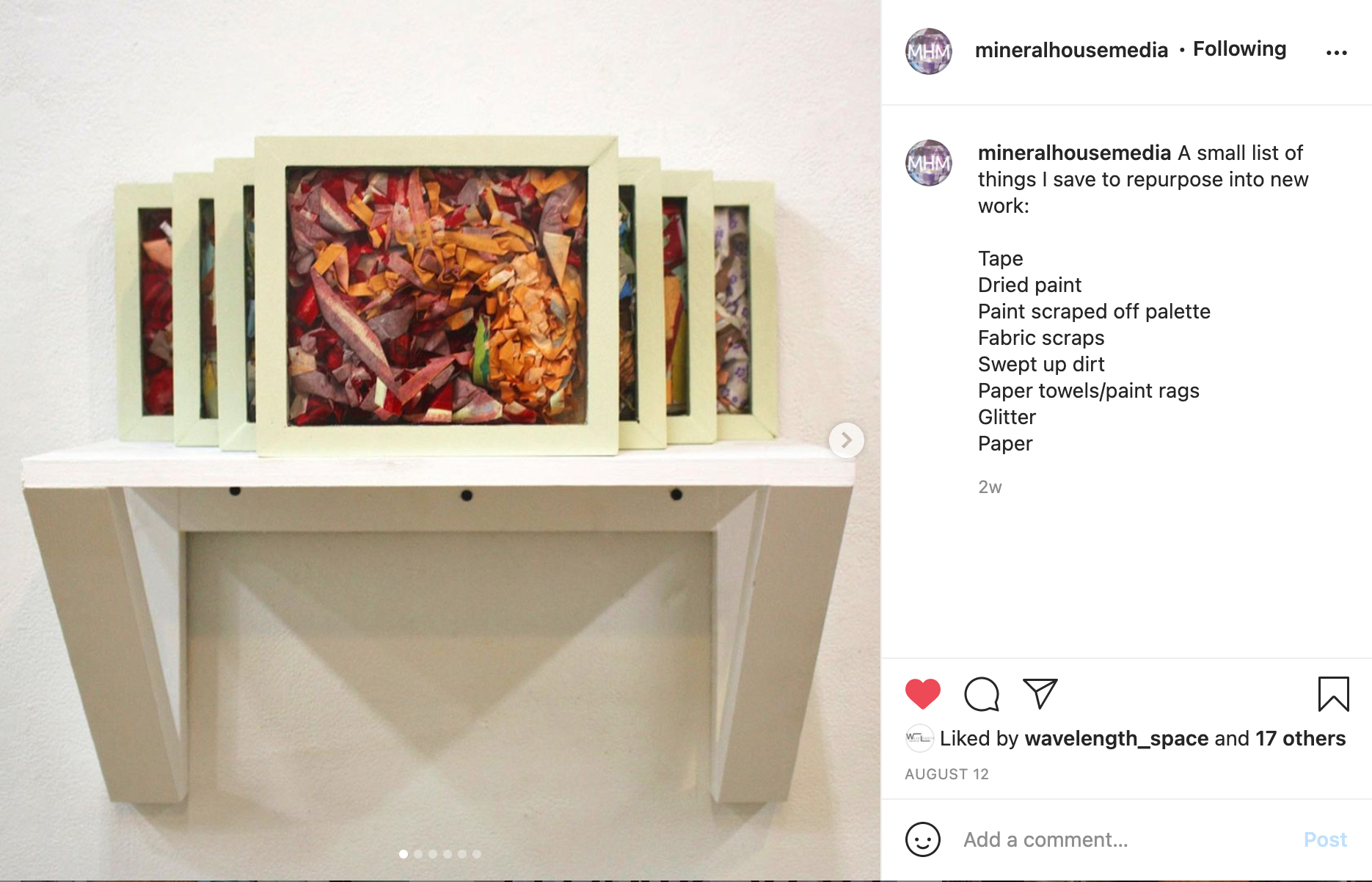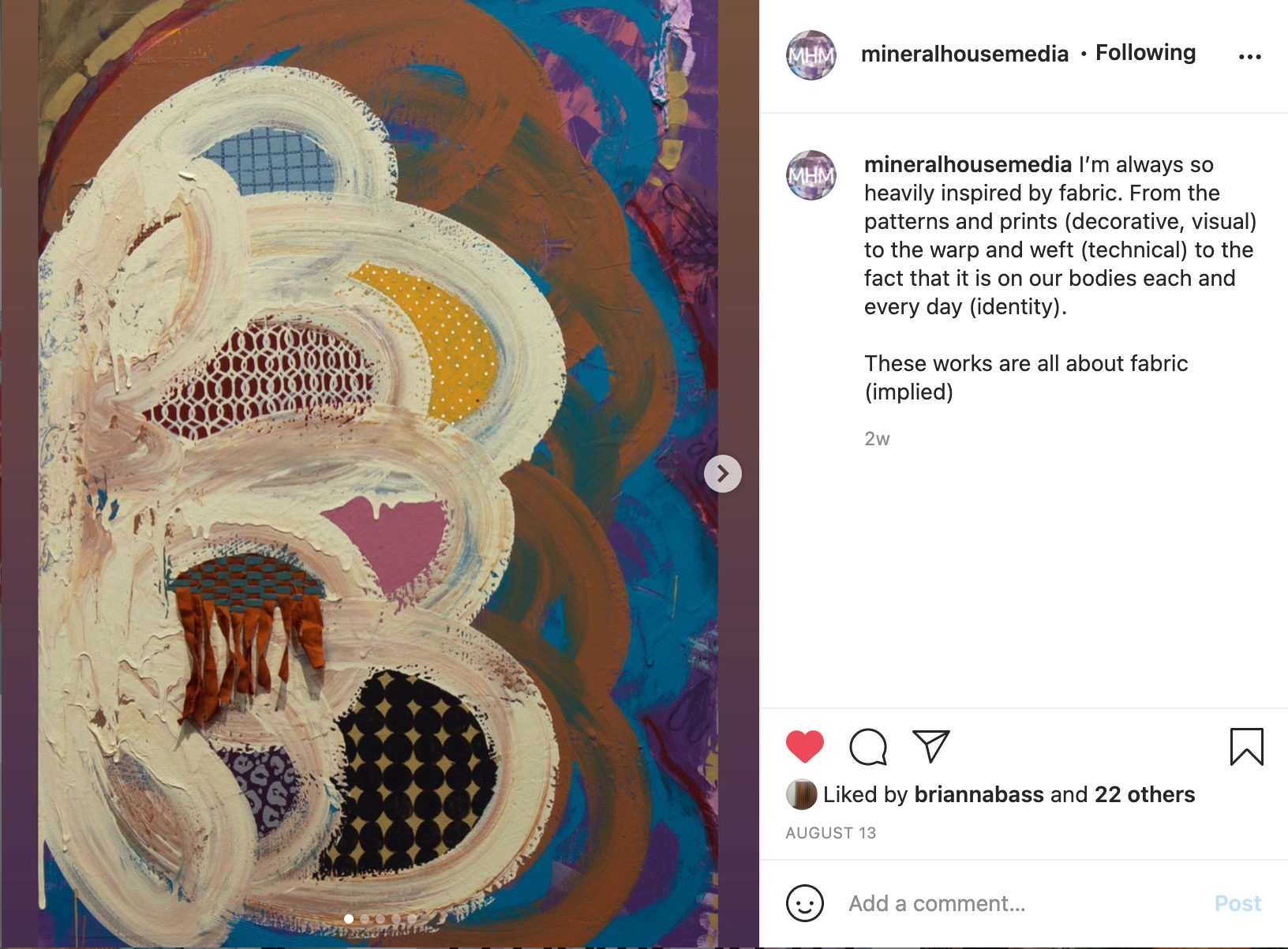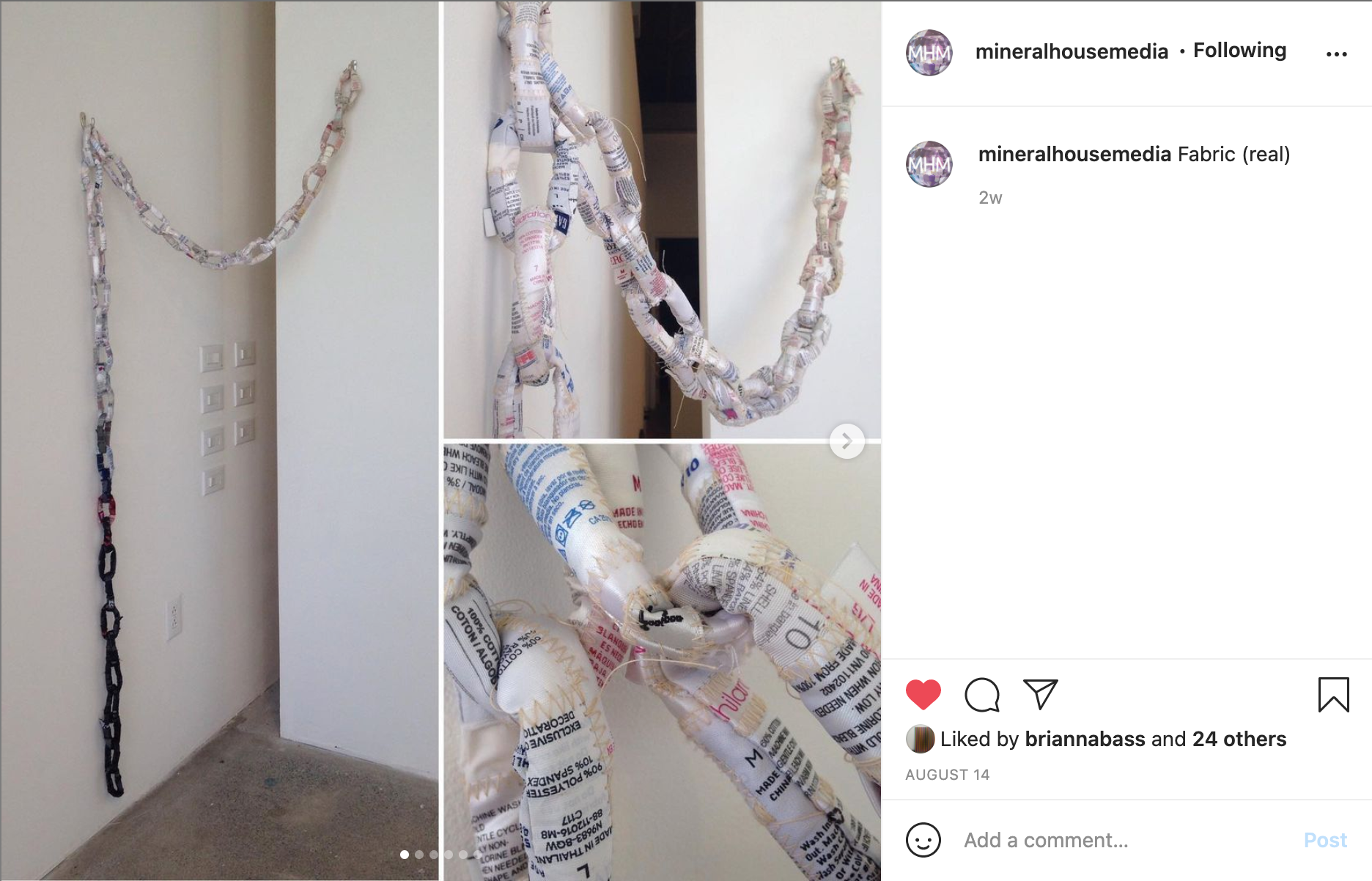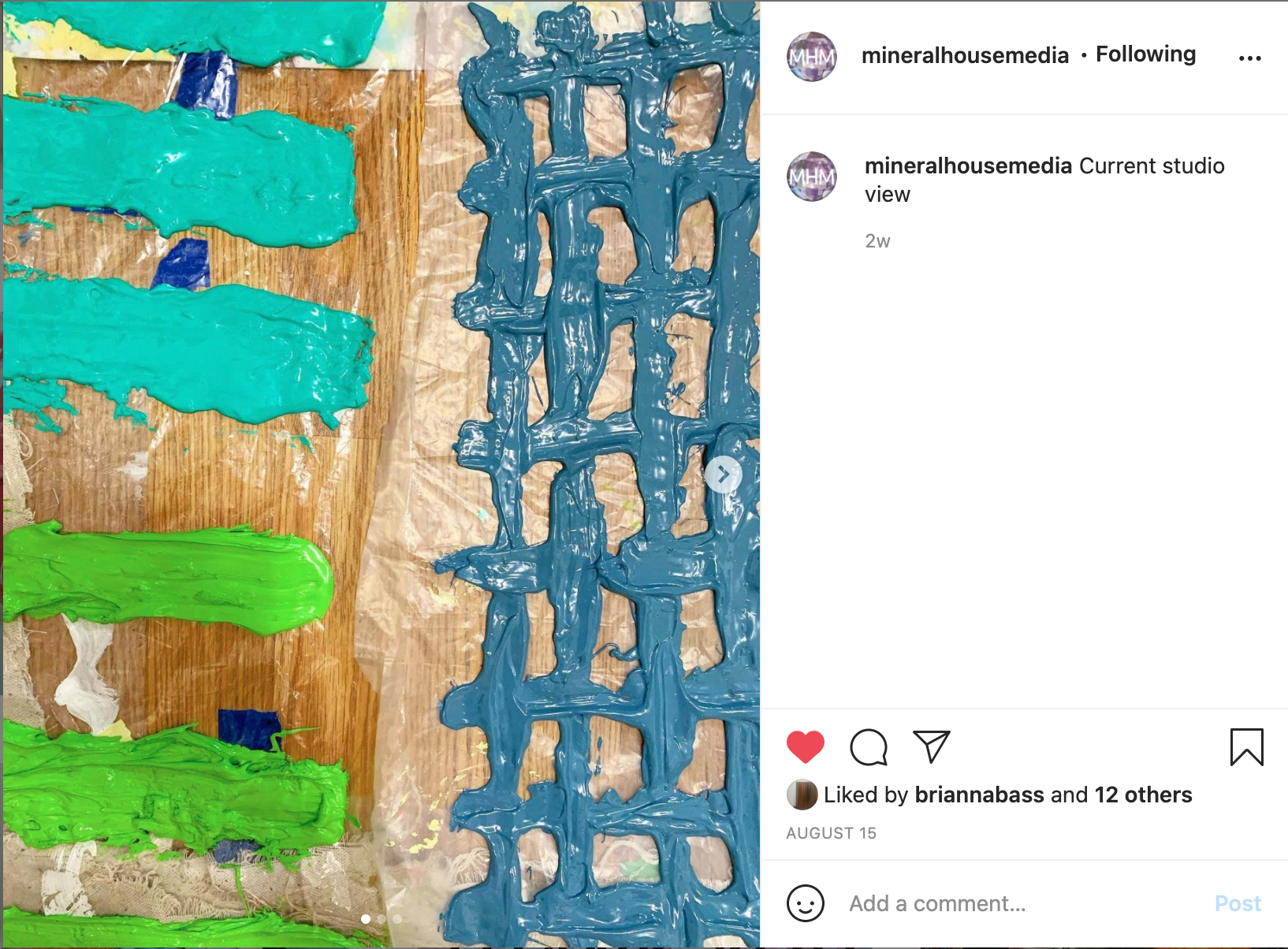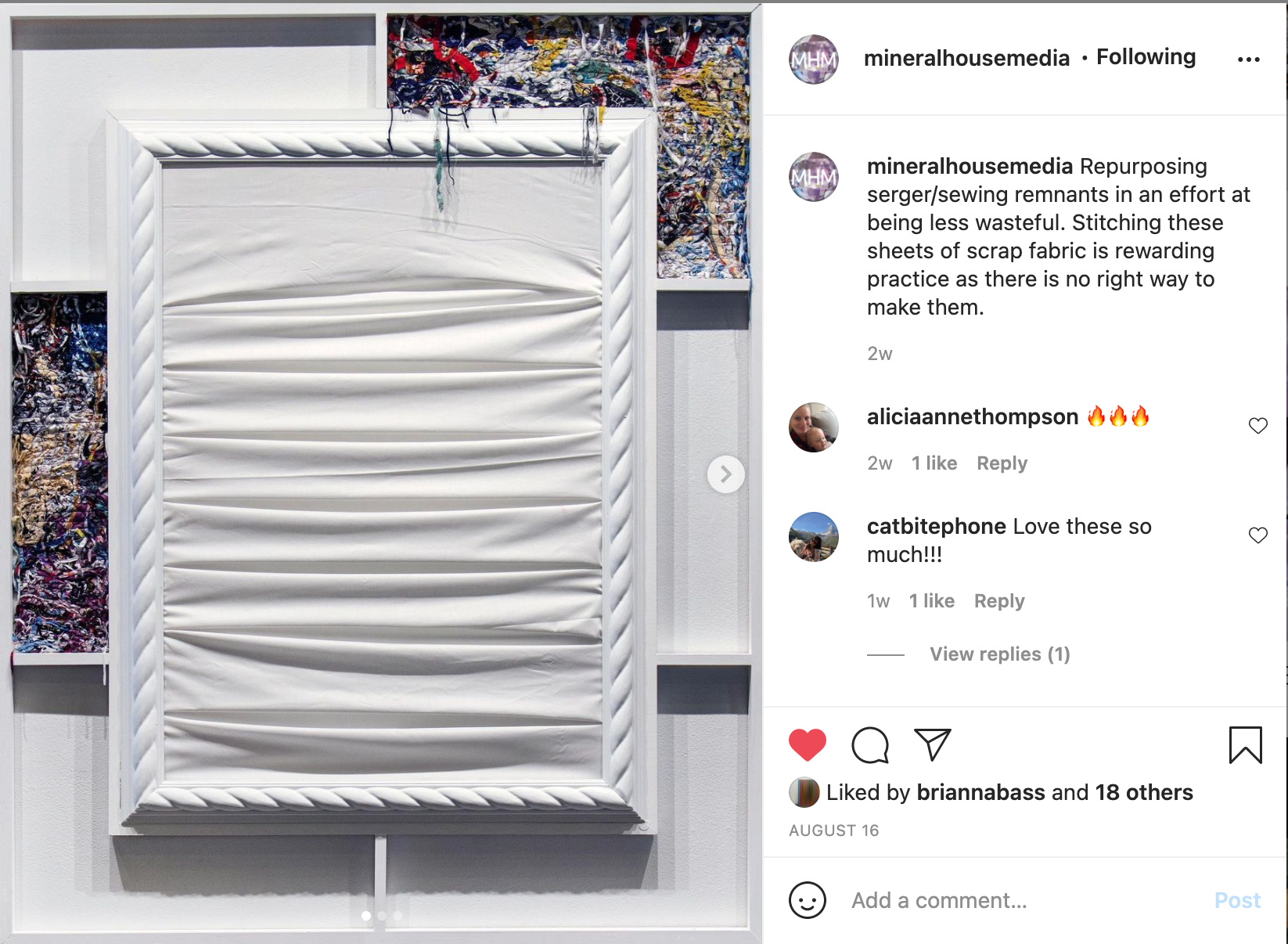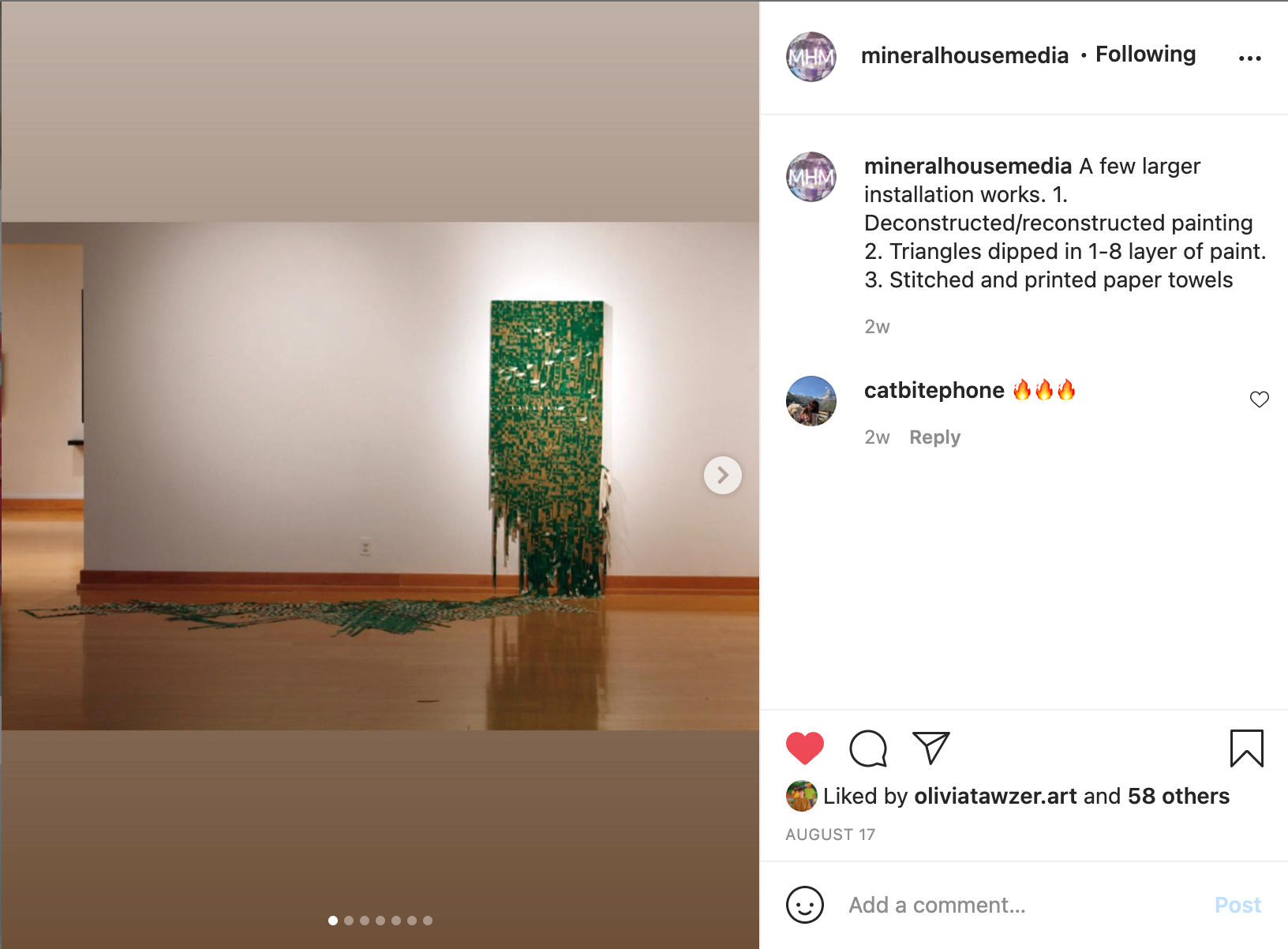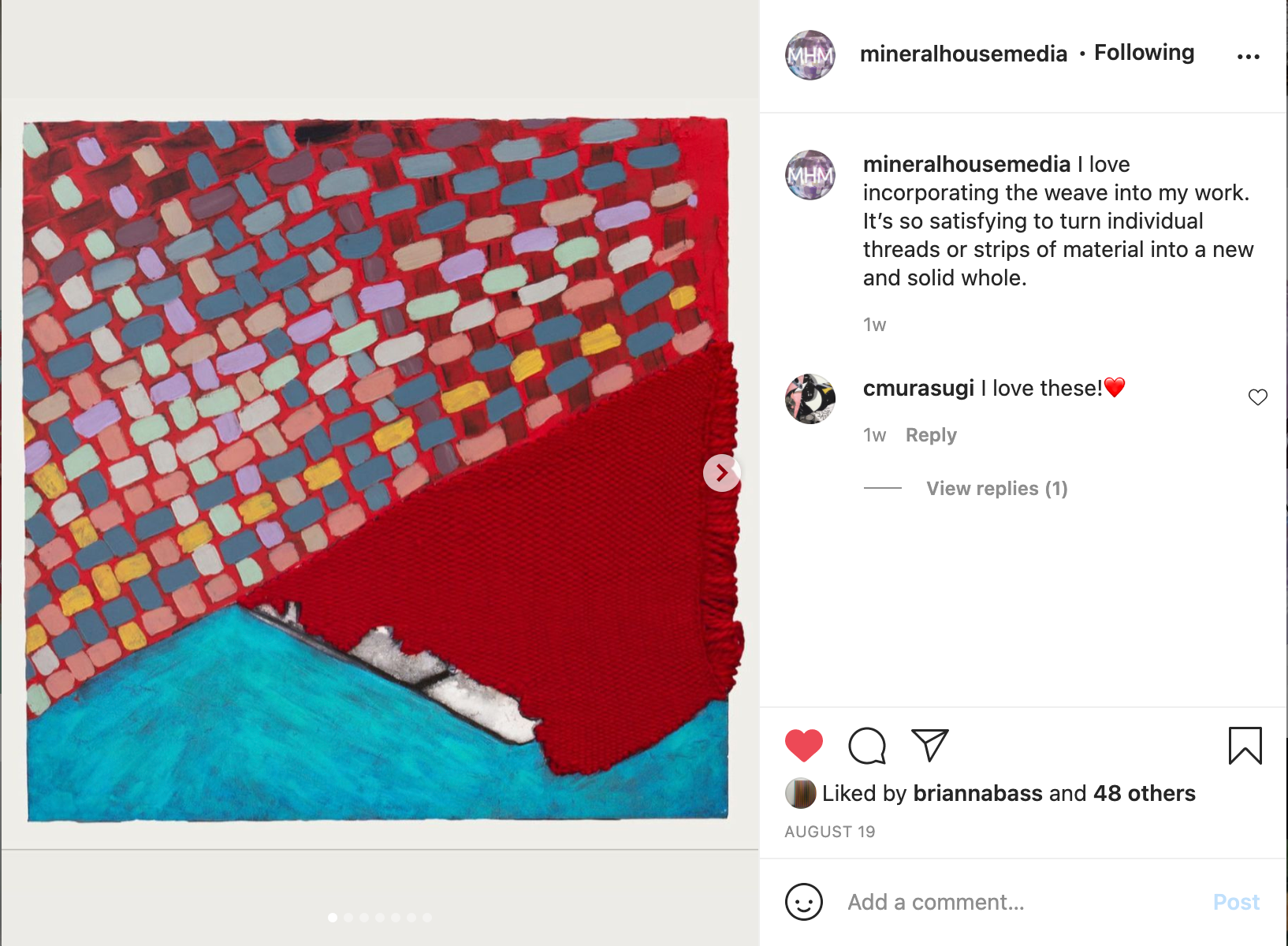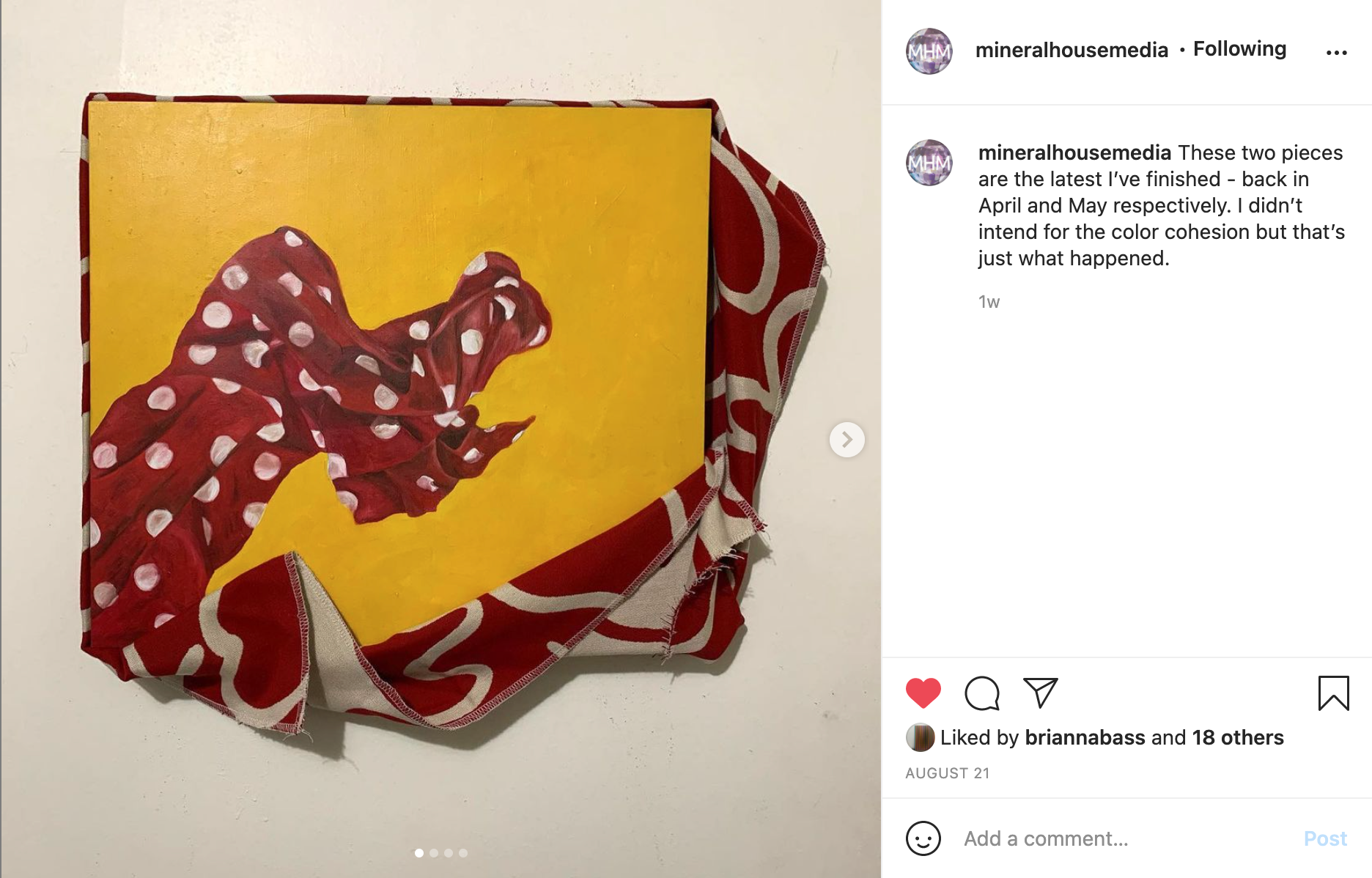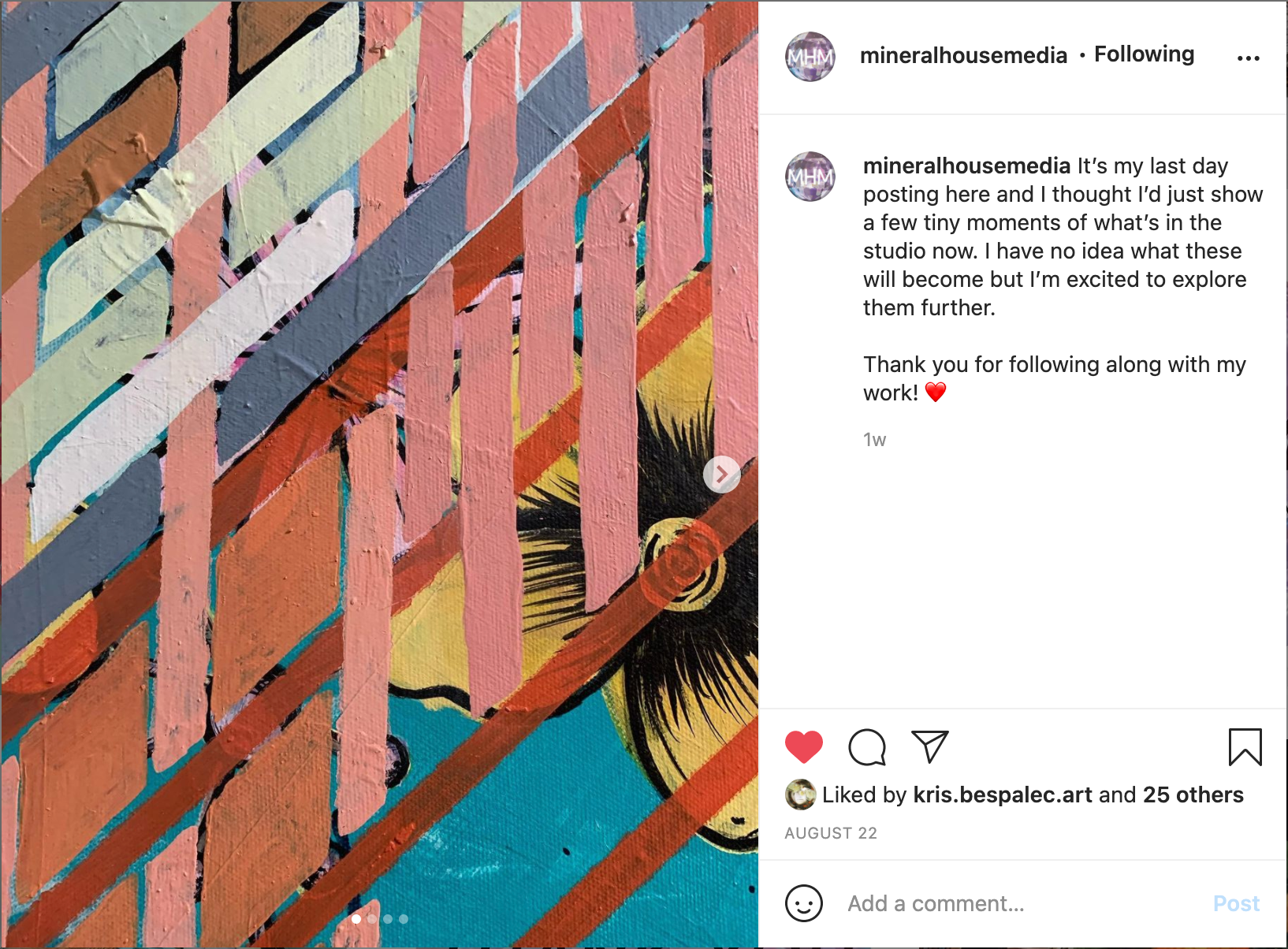Interview with Allison Tierney
Interview with
Allison Tierney
August 2021 Digital Resident
“Repurposing is a consistent thread found throughout my work. Initially driven by need, recycled house paint and discarded bed sheets served as my primary tools as I could not afford materials to make art. Over time, my need for these materials diminished yet my desire to use them strengthened. I find purpose in turning waste into viable art.
My work can be viewed as two distinct but closely related bodies. One body relying heavily on painting and the history of abstraction to respond to found objects while the other employs the techniques of various crafts as a means to discover personal identity, to comment on consumerism, and to investigate the divide between craft and art.
Because my work is now situated between painting and sculpture, the materials have evolved to include items such as found fabric and wood, pieces of home decor, and tchotchkes. Most of these items either lack function or have outlived their intended purposes but find new meaning in the work. For this body of paintings the found object is primary. Despite being forgotten or discarded, these artifacts retain value in the histories and stories they have the potential to tell through the work; they carry in them the means to create fictional narratives about past owners while simultaneously eliciting personal memories from the viewer.
The work I make is in direct response to social concerns such as waste and environmental issues, consumerism and the labor industry, and mass-production. These matters are too grandiose for one person to tackle and can often leave one to feel powerless and ineffective. Through craft and art, I am enacting control over common household objects and forcing them to transform and meld into colorful, encouraging, and optimistic works of art. My work is an act of rebellion, albeit a personal one, to our mass-produced world. It’s a way to value the value-less.”
-Allison Tierney
Mineral House Media: Have you always worked from the perspective of “valuing the valueless,” dating all the way back to the beginnings of your work? Or has this ideology evolved over time as we become more and more informed and at risk of detrimental consumerism/mass production?
Allison Tierney: I have always repurposed materials in my work, but originally it was out of necessity rather than an awareness of what it could mean. I simply couldn’t afford all of the supplies I wanted to use, so I turned to free house paint and discarded household materials. Even though I now have the means to buy the supplies I need, I still find significance in repurposing for the reasons you outlined.
MHM: It’s interesting to see in your older, “strictly painting,” work that you seemed to have an affinity for stripes and other design patterns that could seemingly appear on fabric—a material found later on in your career. When did you start adding the physical fabric in?
AT: Ah this is really interesting! It wasn’t intentional, but there was something about the order and control that lines and patterns gave me when juxtaposed with the more gestural mark-making that was happening. I have always been drawn to clothing and design that had lots of patterns and bold color. The actual fabric didn’t find its way into my work until around 2013.
MHM: What type of paints and other materials (brushes, canvases, adhesives, etc.) do you use? What are your go-to art products?
AT: I use a lot of Latex house paint but also acrylics (I’ll use any brand). I will occasionally (like very rarely) use oils if I want to paint something more realistic. I mostly build and stretch my own canvases especially on the paintings with objects embedded in them, as they need housing built into the back. I use gel medium as my adhesive when I collage. I would say tape is another big supply. Other than that, I use whatever is around me. I am definitely a collector and my studio is packed with random materials and objects that find their way into the work.
MHM: Can you talk a bit about your relationship with the edge on your supports? So many of your works continue on past the perimeter of your working surface, and I’d love to hear you expand upon that.
AT: Shortly after finishing undergrad, one of my professors gave me one of his old canvases as a challenge. It was a shaped canvas, and I loved working with it because it allowed me to redefine what Painting could look like to me. Since then I have been focused on breaking the frame or rethinking the “structure” of a painting. I find the way it interacts with the space and objects around it to be more energized as the work behaves more like installation/interior design.
MHM: I love the way you talk about giving these found objects a “second chance.” How does this relate to the perception of time and existence found in your work? Do you often think about the history of the object’s life and how it made its way to you?
AT: Yes and no. I believe that each object carries with it it’s own history, but I rarely create a specific story for an object like “oh, this old lady owned this.” Instead I recognize that each viewer has their own relationships or memories tied to the objects in the work, and I want to allow space for them to feel that. When I’m creating a piece I think about how the objects were intended to function, and I try to represent them for what they are instead of transforming them into something they’re not.
MHM: What inspires the vibrant color choices found in your work?
AT: Since I use mostly recycled house paint, a lot of my color is how I found it. I think this lends itself nicely to my interest in languages of design, like fashion or home design.
MHM: Your small collages feel like little swatches or samples of the bigger picture within your studio. How do you feel about the idea of accessibility in making and/or distributing smaller and quicker works?
AT: The whole reason I started the collages was as a form of studio warm-ups. As I continued to make them, I began to appreciate them as their own body of work and recognized that they were works I could make with the intention of creating affordable and accessible art. They’re still one-offs that have been labored over but also works that most anyone could find space for.
MHM: What mixtures are you creating to allow these paint “spills” to dry and then come off the non-stick paper in a 3D form?
AT: I’m sure there’s a better way, but for me I just pour latex house paint onto plastic sheeting in the shape I want it to dry in. Sometimes I will pour onto a layer of screening to help hold the form. For the larger ones I’ll cut and adhere a wooden backing to the shape of the pour after it’s dry.
MHM: Do you find weaving to be a form of collage?
AT: For me they’re very different processes, collaging feels more active as it’s something that’s always in a state of change, you’re constantly manipulating forms like a puzzle until you find a finished composition. Weaving feels much more about repetition where you are repeating an action until you reach the finish line.
MHM: Your red & white polka dotted piece made me wonder to what depths you’ve considered the approach of trompe l’oeil? Has there ever been a conversation in your practice regarding the potential dimensionality of your flat painting, and the potential flatness of your printed fabrics.
AT: To me a successful trompe l’oiel has always been the mark of a “good artist”, which is absolutely ridiculous, like “if I can paint this realistically then I’ve done it.” I don’t even agree with that, but something about the challenge has always motivated me. Trompe L’oiel painting occasionally finds it way into my work when I’m craving that challenge, but I think this polka dot piece might be the most successful way in that it does challenge our perception of “real” in that the painting reads as more dimensional than the physical fabric.
MHM: There are also some works that are reminiscent of “shadow boxes,” a way to sort of memorialize these unused/recycled materials. How does this compare to the art historical context of preserving artifacts or building reliquaries to display these artifacts in history?
AT: That’s definitely where the impulse to make this work came from. Knowing (or hoping rather) that this work might find its way into a gallery or museum drives the desire to change the narrative of what is deemed valuable with this work. Because this work is viewed in the context of a gallery (or digital Art viewing platform), it automatically elevates the value of the objects, which in my boxes are tape and hair and thread, which hopefully elicits the question of why and what we value. I do also find inspiration in the modern shadow boxes that we might have in our home (filled with signed baseball jerseys and thimbles) as well.
MHM: What is the best way to stay in touch with you and the future development of your work?
AT: You can follow me on Instagram @Agtierney
Allison Tierney (b. 1987, Charleston SC) is a visual artist living and working in Chapel Hill, NC. She received her BFA from Winthrop University and her MFA from UNC Chapel Hill where she won the Top Prize for Outstanding MFA Work. Her work can be viewed as two distinct but closely related bodies. One body relying heavily on painting and the history of abstraction to respond to found objects while the other employs the techniques of various crafts as a means to discover personal identity, to comment on consumerism, and to investigate the divide between craft and art.
